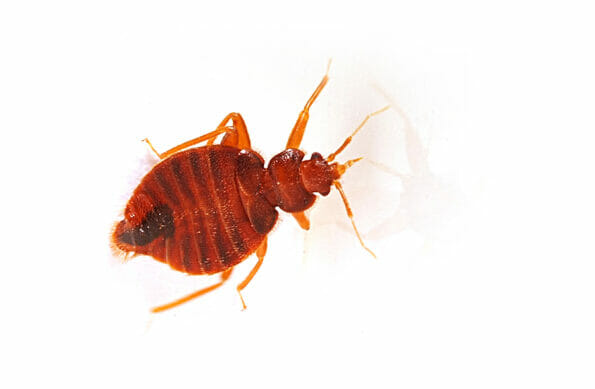Bed bugs are a growing problem in homes and hotels around the world. These pests are small, elusive, and difficult to detect, which makes them a major nuisance for property owners and a source of stress for those who encounter them. Traditional bed bug detection methods, such as visual inspections and traps, have been the go-to for years, but in recent years, sniffer dogs have emerged as a new and potentially more effective way to find bed bugs.
In this blog post, we will explore the benefits and drawbacks of traditional bed bug detection methods and sniffer dogs and ultimately determine which is better for identifying bed bugs. Whether you’re a homeowner or a hotel manager, this post will give you the information you need to make an informed decision about choosing a bed bug detection method.
Traditional Bed Bug Detection Methods
Table of Contents
Visual Inspections
Visual inspections are one of the most common ways to detect bed bugs. A trained professional inspect the area visually to look for signs of bed bugs such as live bugs, shed skins, fecal stains, or blood spots. While this method is simple, it requires a trained eye to identify all bed bug hiding places, and the process can be time-consuming.
Interception Devices
Interception devices are small plastic trays placed under the legs of furniture or near the bed to trap bed bugs as they travel to or from their hiding places. These devices trap bed bugs in a sticky substance, preventing them from reaching their target. Interception devices are relatively inexpensive and can be used in conjunction with other detection methods.
Pitfall Traps
Pitfall traps trap traps bed bugs in a container filled with talcum powder or another type of fine powder. Bed bugs get stuck in the powder when they climb in and out of the container, making them easy to detect. Pitfall traps are easy to use but may only be effective in some situations.
Active Monitors
Active monitors are electronic devices that use carbon dioxide or other attractants to lure bed bugs into a trap. When bed bugs enter the trap, they are caught and held in a container for later inspection. Active monitors are generally more expensive than other detection methods, but they can be very effective and help identify bed bug activity before an infestation becomes established.
Sniffer Dogs as Bed Bug Detectors
Sniffer dogs are specially trained to detect bed bugs using their sense of smell. They undergo rigorous training that can last several months to a year, where they learn to identify the scent of live bed bugs, their eggs, and their fecal matter. The training process typically involves pairing the dogs with a handler, which helps them develop their skills and reinforce good behavior.
Sniffer dogs have several advantages over traditional bed bug detection methods. First, they can detect bed bugs even when hidden in hard-to-reach places, such as cracks and crevices in walls, furniture, and baseboards. This makes them particularly effective in large spaces such as hotels, where bed bugs can quickly spread. Second, sniffer dogs can quickly and accurately detect bed bugs, reducing the time and cost associated with traditional detection methods. Finally, sniffer dogs can detect bed bugs early, allowing property owners to take swift action and prevent infestations from becoming established.
Comparison of Sniffer Dogs and Traditional Bed Bug Detection Methods
Regarding cost, traditional bed bug detection methods are generally less expensive than sniffer dogs. Visual inspections, interception devices, pitfall traps, and active monitors are relatively inexpensive and can be performed by trained professionals. Sniffer dogs, on the other hand, require specialized training, handlers, and equipment, which can be costly.
Sniffer dogs are generally faster and more efficient than traditional bed bug detection methods. A well-trained sniffer dog can quickly detect bed bugs in large spaces, such as hotels or apartment buildings, which can be difficult to inspect using traditional methods. In contrast, traditional detection methods, such as visual inspections or traps, can be time-consuming and may need to be more effective in detecting bed bugs in hard-to-reach areas.
Sniffer dogs are generally more accurate than traditional bed bug detection methods, particularly in large spaces or where bed bugs are hidden in hard-to-reach places. Sniffer dogs can detect bed bugs with high levels of accuracy and can identify bed bug infestations in their early stages. However, the accuracy of sniffer dogs can be affected by external factors such as temperature, humidity, and distractions.
Both sniffer dogs and traditional bed bug detection methods have limitations. Traditional methods can be less effective in detecting bed bugs in hard-to-reach areas, and they may miss early-stage infestations. Sniffer dogs can give false alerts, and their accuracy can be impacted by external factors. Additionally, sniffer dogs require specialized training and handlers, which can be costly. Finally, both methods may require multiple inspections or treatments to fully eradicate bed bug infestations.

Conclusion
In conclusion, both sniffer dogs and traditional bed bug detection methods have their advantages and disadvantages. Traditional methods such as visual inspections, interception devices, pitfall traps, and active monitors are less expensive and can be performed by trained professionals. On the other hand, Sniffer dogs are generally faster, more efficient, and more accurate in detecting bed bugs, particularly in large spaces or hard-to-reach areas. However, sniffer dogs require specialized training and handlers, which can be costly, and their accuracy can be affected by external factors.
Ultimately, the choice between sniffer dogs and traditional bed bug detection methods depends on the specific situation and needs of the property owner. For small infestations or individual homes, traditional methods may be sufficient. However, sniffer dogs may be a more effective and efficient option for larger infestations or commercial properties such as hotels. Ultimately, the most important thing is to take swift action to detect and eradicate bed bug infestations to prevent further spread and ensure the safety and comfort of residents and guests.
Image Source: BigStockPhoto.com (Licensed)
Related Categories: Home, Health, Reviews








